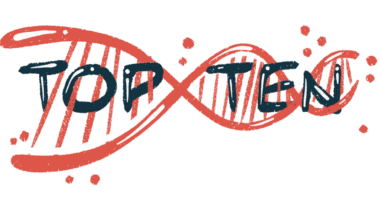Deleting exon 51 in Duchenne pig model lacking exon 52 treats disease
Work mimics exon skipping therapies in DMD, restoring dystrophin to muscles

Deleting exon 51 in the DMD gene — which mimics exon 51 skipping therapies — reversed all signs of Duchenne muscular dystrophy (DMD) in a pig model lacking exon 52, a severe disease-causing mutation in people, a study reported.
Pigs missing both exon 51 and 52 had normalized dystrophin production, muscle integrity, heart function, and markers of muscle and organ damage.
The study, “Systemic deletion of DMD exon 51 rescues clinically severe Duchenne muscular dystrophy in a pig model lacking DMD exon 52,” was published in the journal PNAS.
Exon skipping treats DMD through production of a working dystrophin protein
Dystrophin is a protein that cushions muscle cells and protects them from damage during repeated muscle contractions. Mutations in the DMD gene that cause Duchenne result in no functional dystrophin production. Over time, this causes wear-and-tear damage, leading to such disease symptoms as progressive muscle weakness.
Most disease-causing mutations are deletions of one or more exons — segments along the DNA strand that contain the instructions to make proteins. Of the 79 exons in the DMD gene, the loss of exons 2 to 10 and 45 to 55 most frequently causes disease.
Exon skipping is a therapeutic approach for people with DMD that aims to reduce disease severity and progression. It works by masking specific exons, particularly those adjacent to the missing exons, allowing for the production of a shortened but working dystrophin protein.
Exondys 51 (eteplirsen), for example, is an approved exon-skipping therapy for DMD patients amenable to exon 51 skipping, representing about 13% of the DMD population. Studies demonstrate that Exondys 51 increases the production of dystrophin, slows the decline of motor and lung function, and extends survival.
To investigate the best possible outcome with this approach, researchers in Germany led a study where exon 51 was deleted, to mimic exon 51 skipping, from a DMD pig model already harboring an exon 52 deletion, one of the most frequent DMD gene mutations in patients.
Dystrophin evident only in muscles of pigs lacking exons 51 and 52
As expected, tissue analysis showed no signs of dystrophin protein in the muscles of pigs lacking exon 52. By comparison, those missing exons 51 and 52 had evidence of dystrophin protein in skeletal muscle, those attached to bones, and in heart muscle.
“The rescue of the clinically severe DMD in [exon 52 deleted] pigs by systemic deletion of DMD exon 51 … is due to the restoration of dystrophin,” the researchers wrote.
Several bloodstream markers associated with DMD were normalized in pigs lacking exon 51-52 to the levels of healthy pigs. This included creatine kinase, a diagnostic marker for heart and skeletal muscle damage, creatinine, an indicator of kidney functional and muscle mass, alanine transaminase, a marker of liver injury, and troponin I, which specifically reflects heart damage.
Compared with the skeletal muscle in pigs without exon 52, pigs missing both exons showed no signs of muscle scar tissue (fibrosis) with decreased variability in muscle fiber diameter, which is high in DMD. Also, fewer skeletal muscle cells had the nucleus in the center, a common feature in DMD patients.
Heart function at 3.5 months of age was significantly reduced in pigs missing exon 52 compared with healthy pigs, as indicated by a reduced ability of the heart to pump blood throughout the body. By contrast, pigs missing exons 51-52 had normal heart function.
At nine months, pigs without exon 52 showed signs of heart muscle scarring, as well as elevated MYH3, a marker of muscle regeneration. Both signs were absent in pigs lacking exons 51-52.
Finally, cellwide protein production in skeletal muscle was significantly altered in pigs without exon 52, while no difference was evident between healthy pigs and those missing exons 51-52. A similar pattern was seen in the heart muscle cells.
Pigs with exon 51 and 52 deletions may be animal model for Becker MD
Proteins most linked to these alterations included those involved in protein production and metabolism. Proteins involved in the extracellular matrix, the scaffold of proteins and molecules surrounding and supporting cells, which is associated with fibrosis, also were affected.
“Our study demonstrates that systemic deletion of DMD exon 51 rescues clinically severe DMD in a pig model lacking DMD exon 52,” the researchers concluded.
They also noted that, because pigs are particularly susceptible to dystrophin-related muscle damage, those lacking exons 51-52 may be a large animal model for Becker muscular dystrophy (BMD). Caused by different DMD mutations that allow some dystrophin production, BMD is associated with delayed onset, milder symptoms, and slower progression than DMD.
“Long-term follow-up studies of [exon 51-52 deleted] pigs will show if they develop symptoms of the milder BMD,” they wrote.







